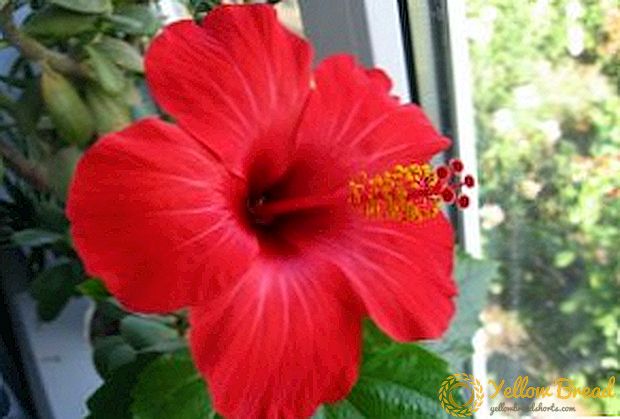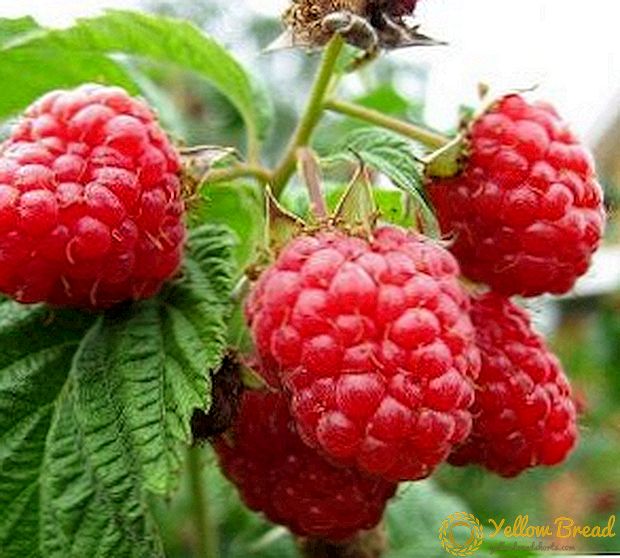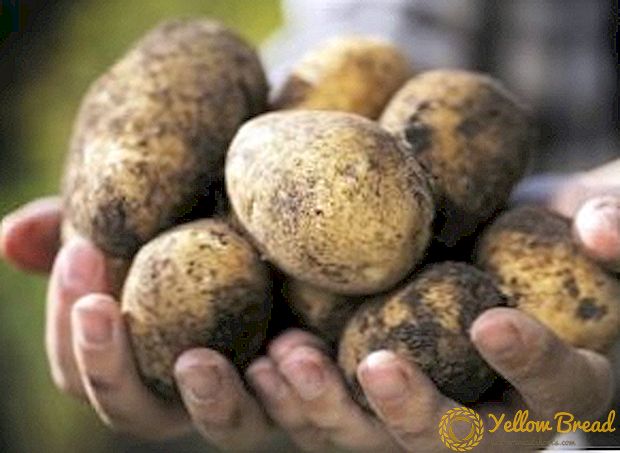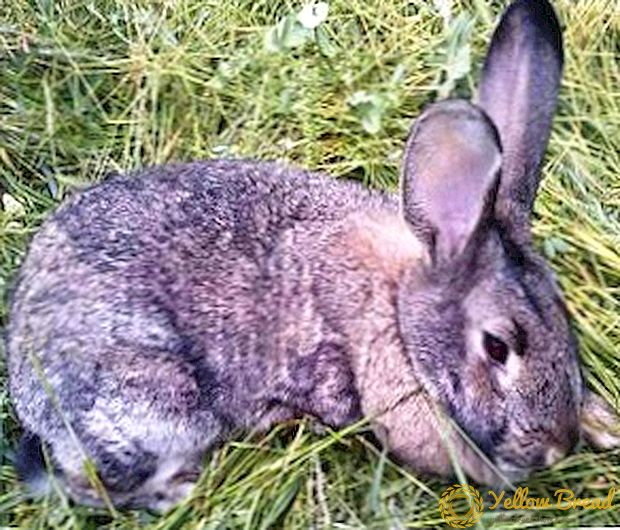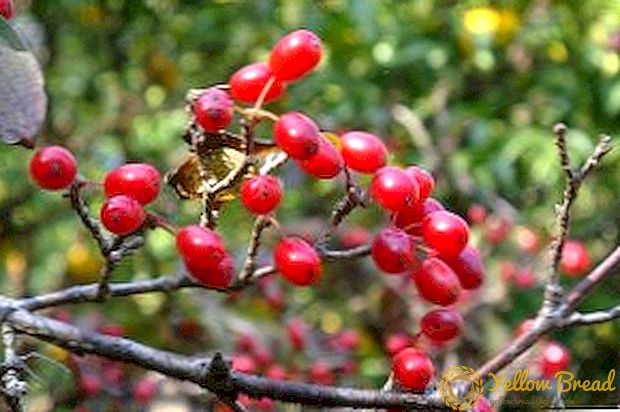 The number of varieties of mountain pine is close to 120 and is constantly increasing. Mostly dwarf and miniature species appear that are difficult to distinguish. Consider what constitutes a mountain pine, what are the varieties of this tree and how they differ.
The number of varieties of mountain pine is close to 120 and is constantly increasing. Mostly dwarf and miniature species appear that are difficult to distinguish. Consider what constitutes a mountain pine, what are the varieties of this tree and how they differ.
- Mountain Pine (Pine Mugo) Description
- Pine mountain Allgau (Allgau)
- Pine mountain Benjamin (Benjamin)
- Pine mountain Carstens Wintergold (Carstens Wintergold)
- Pine mountain Chameleon (Chameleon)
- Pine mountain Golden Glow
- Pine mountain Hesse
- Pine mountain Hnikizdo (Hnizdo)
- Pine mountain Hampi (Humpy)
- Pine mountain Kissen (Kissen)
- Pine mountain Krauskopf (Krauskopf)
- Pine Mountain Cockade (Kokarda)
- Pine mountain Laurin (Laurin)
- Pine mountain Litomysl (Litomysl)
- Pine mountain Little Lady (Little Lady)
- Pine mountain March (March)
- Pine mountain Mini Pug (Mini Mops)
Mountain Pine (Pine Mugo) Description
Mountain pine in the natural environment is common in the foothills of Central and Southern Europe. This coniferous, evergreen tree is up to 10 m high. Shrub forms are also possible. A characteristic feature of mountain pine is the structure and color of the plant stem. At a young age, the bark is smooth brown-gray in color, but over time it becomes covered with dark brown scales in the upper part of the trunk.Therefore, the lower part has a lighter color than the top. 
Needles 2.5 cm long, firm, dark green. The tree gives fruits in the form of cones, which appear from 6-8 years of age. Flowering occurs in May, and the buds ripen in November next year. Cones up to 5 cm long gray-brown. They appear on young shoots, which are greenish at first, but by winter they manage to woody. The tree by the age of 20 can grow up to 20 m tall and up to 3 m in diameter. The annual growth of young shoots is about 6 cm.
Mountain pine is used to decorate rocky gardens, to strengthen the earthen slopes. The plant is sun-loving, frost-resistant, low-demanding, grows in different soils and is not afraid of its compaction. It tolerates heat, urban climate, snowfall. Diseases and pests pine is not damaged.
Mugo mountain pine has many decorative forms that have their differences, but inherited a preference to grow in sunny areas, resistance to frost, the ability to grow in different soils without special requirements. Consider the most common ones.
Pine mountain Allgau (Allgau)
The plant is a dwarf shrub with a spherical crown. A distinctive feature of the Allgäu pine, which gives it a charming appearance, is the high density of the crown with shiny needles in a dark green color. The height of an adult tree is 0.7–0.8 m, with a crown diameter of 1–1.2 m. Each year the tree gives an increase of 7–8 cm. The needles are long, arranged in bunches of 2 needles, which are slightly twisted at the end. 
The trunk of the tree is smooth, red in color, which gives a special decorative effect. The density of the crown create a lot of short hard shoots covered with needles. Thanks to this tree is easily formed. The plant can be grown in containers. From this shrub you can grow bonsai or any sculpture that will decorate landscape compositions, rock garden or park.
When planting, it should be remembered that the tree grows worse in shaded areas with compacted soil. During the adaptation period, seedlings need shelter for the winter. The plant is not fastidious, it has no special requirements for the composition of the soil and its moisture. Diseases and pests Allgau pine is not damaged.
Pine mountain Benjamin (Benjamin)
A slowly growing tree is a dwarf coniferous shrub grafted on a high trunk. The crown's shape is flat-spherical, dense, 0.5–1 m high. The tree gives an annual growth of 3-5 cm. The needles are shiny, dark green in color. Needles are short, hard. The tree grows on any drained soil and is characterized as picky. It is used for decoration in rock gardens, gardens and parks, grown in containers. 
Pine mountain Carstens Wintergold (Carstens Wintergold)
The variety obtained by selection from a seedling of mountain pine in 1972. The tree is a dwarf or medium-sized shrub with an evergreen spherical shape. The height of an adult plant is 40 cm. 
A unique feature of the pine of the mountains Carstens Wintergold is the color change of the needles according to the season. The green ball gets gold first and then orange-copper color. The needles grow in bunches of 2 needles, each 3-5 cm long. In the summer, it is light green with a yellow tinge, becomes golden yellow by the end of September, and bronze yellow with the onset of cold.
The plant produces fruits in the form of egg-shaped cones, 2-6 cm long, yellow-brown color.Young shoots of a tree are short, have vertical growth and are located on a dense crown, therefore do not break under a layer of snow. The bark of the trunk is scaly gray in color with a brown tint. Roots strongly branched, grow mostly superficially.
Pine Carstens Wintergold affected by pests: aphid, mites, bark beetles, Hermes, sawflies. To protect the mountain pine, it is necessary to identify the pest in time and, accordingly, choose the right means of protection in the form of an insecticide or fungicide. You can carry out preventive spraying.
The plant is used in landscape design. It belongs to the most beautiful pines. Color transformation is used to create contrasting spots in the surrounding landscape.
Pine mountain Chameleon (Chameleon)
This is a dwarf pine variety with a dense crown of irregular shape. 4 cm long needles have a distinctive feature. Its yellow tips change their color to reddish brown after frost. The adult tree grows in height to 2 m. Use a plant for single and group landings in landscape compositions. 
Pine mountain Golden Glow
Evergreen dwarf shrub with a hemispherical crown. An adult tree has a height of 1 m and is up to 1 m in diameter. A distinctive feature of the mountain pine Golden Glow is the change in color of the needles from green to gold according to the season. The needles grow in bunches of 2 needles each and in the summer has a bright green color, and in the winter - bright yellow. 
Fruits in the form of yellow-brown cones ovoid. Crohn dense with vertically growing short young shoots. Roots are close to the surface, strongly branched. Black-gray scaly bark. The plant is light-loving, but shade-tolerant. It is affected by pests such as Hermes, Weymouth pine, Pine Aphid.
Suitable for the design of stony gardens, rock gardens, heather compositions. The plant adds brightness and charm to the landscape especially in winter.
Pine mountain Hesse
Variety Hesse refers to the dwarf pine trees. Plant height is 0.5-0.8 m. The shape of the crown is pincushion, squat in diameter up to 1.5 m with high density. The needles grow in bunches of 2 needles, 7-8 cm long, slightly sinuous, has a dark green color. High density of the crown is achieved due to short numerous shoots up to 5-7 pieces from one bud. 
The variety tolerates small shading well. There are no special requirements for the soil, but it does not tolerate stagnant water and soil compaction. It prefers drained, moderately moist, acidic soil. Can grow on rocky slopes. Used in landscape design for single landings.
Pine mountain Hnikizdo (Hnizdo)
The Hnizdo variety was bred in the Czech Republic in 1984. A distinctive feature of this variety is a compact crown with several main shoots forming a recess in the center in the form of a nest. The plant grows up to 1.2 m tall with the same diameter of the crown.The growth of young shoots per year does not exceed 4-5 cm. The needles are thick, short, dark green. Fruits in the form of small cones 2-3 cm long brown. 
The plant tolerates partial shade. Crohn does not succumb to spring sunburn. It prefers drained, fertile, moderately moist soils, but tolerates temporary drought and soil compaction. Pine mountain Hnizdo is used for single and group plantings in landscape design on lawns and slopes. Can grow in containers. To improve the decorativeness of the tree, it is necessary to conduct spring dressing and watering during the hot period.
Pine mountain Hampi (Humpy)
Humpy undersized pine refers to the dwarf shrubs with a compact pillow-shaped crown. During the year, the growth of young shoots is 4 cm in height. At the age of 10 years, the plant has a size of 0.3 m in height and 0.5 m in diameter. The bark is dark gray. The high density of the crown is due to numerous, strongly branching, expanding shoots. They grow at acute angles relative to the trunk of a tree. 
The root system is located close to the surface, strongly branched. The needles are short, 4.5-5.5 cm long, arranged in bunches of 2 needles each, has a sickle-shaped shape and a dark green color.In winter, its shade becomes grayish-brown, and against this background numerous red-brown buds look spectacular. Fruits of pine Humpy in the form of cones of an egg-shaped form 2-4 cm long in dark brown color.
The plant does not tolerate shading, high temperatures with low humidity. There are no special requirements for the ground, but the presence of drainage is mandatory. Pine Humpy is resistant to snowfall and urban conditions. ANDIt is used effectively for design on the shore of a reservoir, along paths, etc. This variety of low pine is suitable for growing in containers.
Pine mountain Kissen (Kissen)
The Kissen pine variety is dwarf and has a rounded crown. A distinctive feature of this variety are short, hard needles of a dark green color, located not thickly. At 10 years of age, the plant reaches a size of 0.5 m in diameter. The annual growth of young shoots is 5-6 cm. Fruits in the form of dark brown small cones ripen for 2-3 years. The plant is unpretentious, feels good in the conditions of the city. It can grow in various soils, but does not tolerate compaction and salinization of the soil. It has a good root system. Diseases and pests pine Kissen is not damaged.This grade well gives in to formation. Young trees can suffer from sunburn. 
Pine mountain Krauskopf (Krauskopf)
Dwarf pine 0.2-0.4 m tall with a pillow crown up to 1 m in diameter. A distinctive feature of the Krauskopf variety is the thick branches of the plant growing very close to the ground in the horizontal direction. The needles up to 6.5 cm long have a dark green color. Cones are kolonovidny 2-6 cm long, dark brown color. 
Roots have a superficial distribution. The plant prefers sandstone or light loam. This variety tolerates pruning, pinching and is resistant to pests and fungal diseases. Effectively used for retaining walls and strengthening of slopes and ravines.
Pine Mountain Cockade (Kokarda)
A small plant, a distinctive feature of which is a spectacular color of the crown. Each needle has 2 yellow rims. At close range, this creates the effect of golden sparks on the green pine crown. 
Pine mountain Laurin (Laurin)
Dwarf variety, often with a cushion, sometimes conical crown. At the age of 10, the plant grows 0.5-0.7 m high with a crown diameter of 0.8-1 m. The maximum possible height is reached after 30 years of life and is up to 1.5 m and the diameter is up to 2.2 m. Pine needles are soft, thin, collected in bunches of 2 needles each, has a green color and a coniferous aroma. Fruits in the form of rounded cones of brown color 2.5–5.5 cm in length are few. 
The tree is sun-loving, but can grow in partial shade. Prefers a well-permeable, fertile loamy soil with moderate moisture. This variety of pine trees is used to create coniferous borders or hedges, as well as in landscape compositions.
Pine mountain Litomysl (Litomysl)
The tree is a grafted dwarf shrub with a dense crown size of 0.2-0.5 m on the trunk height of 1.1-1.4 m. The needles are short, tough, shiny, dark green color. 
The plant is light-loving, frost-resistant, it grows in various soils, but prefers sandy-drained soils. Litomysl pine is used in stony, heather, oriental gardens and for growing in containers.The plant tolerates urban conditions, diseases and pests are not damaged.
Pine mountain Little Lady (Little Lady)
Pine Little Lady refers to the dwarf shrubs that have a compact spherical crown. The height of the tree is 0.2-0.7 m, diameter - 0.7-1 m. The annual growth of young shoots is 4-6 cm. The needles are short, 2-3 cm long, green, growing in bunches of 2 needles. 
The tree is frost-resistant (up to -34 degrees), tolerates partial shade. Grows in urban environments, wind-resistant, does not suffer from snowfall. It prefers drained, sandy, light loamy, slightly acidic and neutral soils. There are no special requirements for soil moisture, the plant is resistant to waterlogging and drought.
This variety tolerates pruning and pinching and is resistant to pests and diseases. Pine Little Lady is used for single and group plantings.
Pine mountain March (March)
Low shrub with a dense crown. For 10 years it grows up to 0.6 m in height and up to 1 m in diameter. The tree has a relatively long needles of dark green color. The annual growth of young shoots is up to 5 cm. 
The plant tolerates slight shading. It grows in various soils without special requirements. It is used both for cultivation in containers and in open ground to create compositions with other plants.
Pine mountain Mini Pug (Mini Mops)
The plant was selected from a dwarf pine variety Mops. A distinctive feature is a more rounded crown shape and slower growth. The evergreen shrub is of a flattened-spherical shape with short, numerous branches forming a dense crown. The annual growth of young shoots is 2 cm. The needles have a dark green color. By 10 years the plant reaches a height of 0.4 m. 
The plant makes a little shading, and in the shadows can die. It carries the urban climate, haircut, frost, snowfall, strong wind. Pine Mini Mops is not demanding on the ground, but is sensitive to soil compaction. Most of this variety is suitable for stony hills, miniature gardens and for growing in small containers.
Pine is a tree with positive energy.She is able to nourish with life force, give calm and confidence and delight with her charm.

